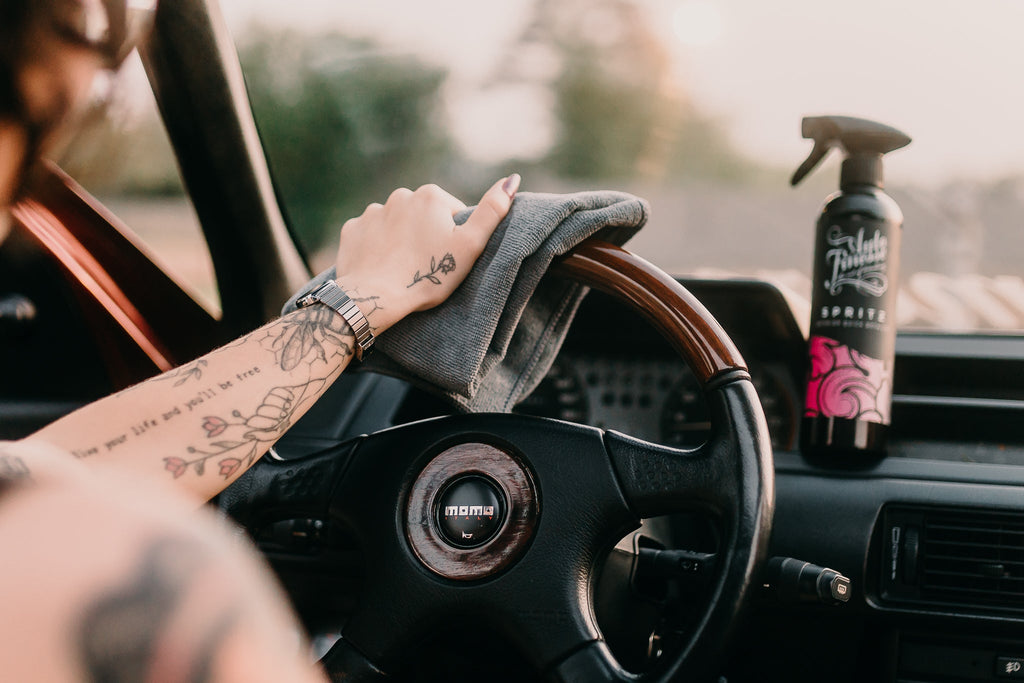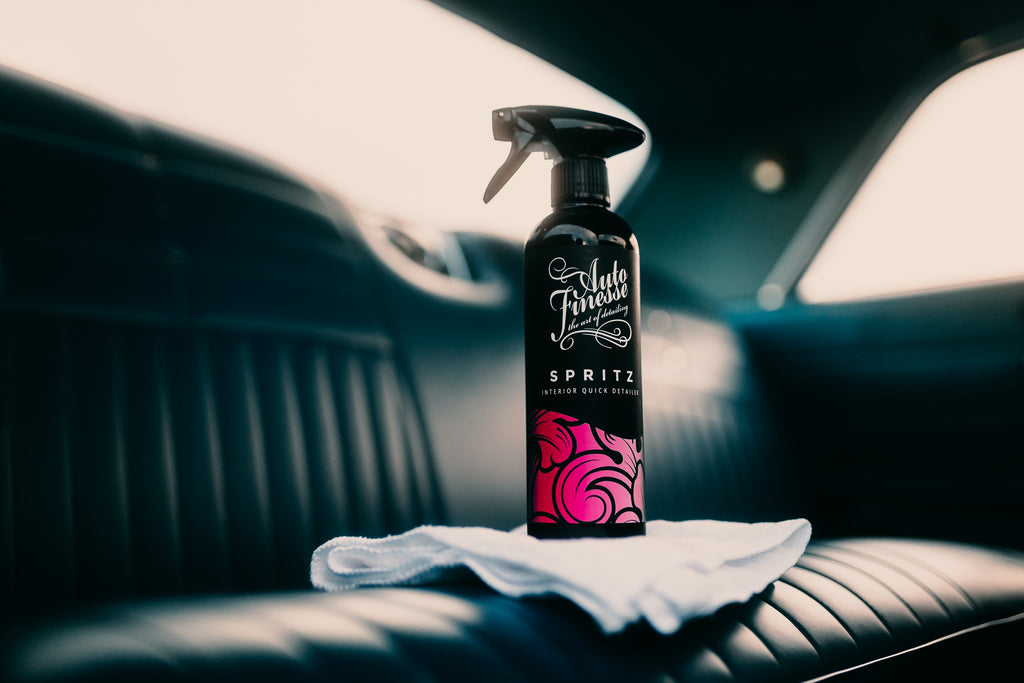Restoring Headlights By Hand
Many cars are fitted with plastic lights as standard and, over years of exposure to the elements and UV radiation, it's common for them to become faded, foggy and yellowed. First and foremost, this causes dulling and improper diffraction of the headlight beams, making them dangerous, often an MoT failure here in the UK, and a huge concern for just about every other government agency checks around the world. It's also guaranteed to date the vehicle and, perhaps most important of all, let down the finish of an otherwise impeccably-detailed car. Luckily though, the cure is simple. By using a selection of light abrasives, faded plastic headlights can be easily restored… even by hand, without the need for expensive specialist equipment or dedicated headlight restoration kits. In fact, you can effectively refresh your hazy headlights using some of the Auto Finesse products you probably already have in your detailing arsenal. And all this without having to go through the trauma of removing them first...

Step 1: Cleaning
First clean your car as normal, carrying out a thorough pre-wash and contact wash. After rinsing and drying the vehicle, it's best to give the headlights some extra care using Verso All Purpose Cleaner and a detailing brush. Work over the whole lens first and then pay particular attention to around the edges where there may be trapped dirt. After one more rinse and dry, you'll be ready to get started. The first stage is the simplest, you'll be looking to get the surface of your headlights as clean as possible. Although you'll be using abrasives for restoration purposes, any grit or grime left on the surface before you start can inflict even more damage by causing deep scratches and ingraining itself into the relatively soft plastic as you work. So, you'll need to begin the restoration with as spotless a surface as possible.

Step 2: Masking
It's unlikely that you'll be removing your headlights to do this job, and this means that the surrounding areas will need a little protection. Using a good quality masking tape, mask off an inch or so around the headlights, being sure to get tape in all the recesses, while avoiding the surface of the lenses. This will protect any paintwork or trim from scratches that may be caused by the abrasives overlapping.


Step 3: Wet Sanding
In many cases faded plastic headlights can be brought back to life with nothing more than a selection of paint compounds and polishes. For the most heavily damaged surfaces though, it may be necessary to use harsher abrasives than those found in paint correction products. Wet sanding involves using varying grades of wet & dry paper, working your way from coarser to finer grits. Bear in mind though, on soft plastic lenses you'll need a selection of paper grades that are far finer than those you'll find used in a body shop for sanding body filler and rust removal. High grades above 1000-grit are best to avoid causing unnecessary damage - here we're using 1200, 2000, and 3000-grit paper, starting with the 1200-grit. To prevent over-sanding or burning the surface, it's also best to carry out this process by hand, rather than using a rotary or dual action sander. What's most important, is to keep the surface wet during the whole process, this is in order to lubricate the paper and prevent heat build-up. A spray bottle with a small amount of Lather Car Shampoo topped up with water works best. Using light pressure, and letting the wet & dry paper do all the work, use each grade of paper one by one, sanding the first grade in a single direction, the second in the opposite direction, and repeating the process with each subsequent grade. Avoiding circular motions will prevent inflicting heavy swirl marks that will require excess compounding later. Keep the wet & dry paper flat against the surface as your work, following each pass by spraying on more of your soapy solution, and then wiping off any residue. When you find the paper glides across the wet surface with little resistance, it's time to move on to the next grade. You'll see that, when you've worked through all grades of paper (and the lens is left to air-dry), the plastic will be smooth to the touch, but still very hazed.


Step 4: Polishing
The restoring and polishing stage is to further refine the surface using the selection of restoring, polishing and refining compounds found in our Revitalise System. This process will remove the hazing and the light scratches inflicted by the wet sanding, leaving behind a clear, shiny surface. Basically speaking, the Revitalise compounds are used just as they would be on paintwork. And, although the desired finish can be achieved even more easily using our DPX Dual Action Polisher and full-size Revitalise Pads, the relatively small surface area of a headlight means that our Revitalise 85mm Spot Pads and a Handi Puck don't require much more effort. These are particularly ideal for those without a machine polisher or access to power. Once again, the idea is to work from the coarsest compound to the finest (Revitalise NO:1 - Revitalise NO:3), using a different pad for each compound, and buffing off any residue with a clean microfibre cloth in-between stages. This time however, the best results are achieved by working each product into the surface using light pressure and small, overlapping circular motions.



Step 5: Finishing & Protecting
If further refinement is required after working through the compounds, this can be carried out in the same way using Tripple All-in-one Polish. In the vast majority of cases, the compound stages will be more than sufficient, and all that will be required is a final buff with Finale Quick Detailer to add more shine to the surface, along with a layer of protection from the elements. Plastic lenses don't require sealants or waxes, but you can still add more protection using Aqua Coat Hydrophobic Rinse Aid or Lavish Ceramic Foam during subsequent maintenance washes.




























